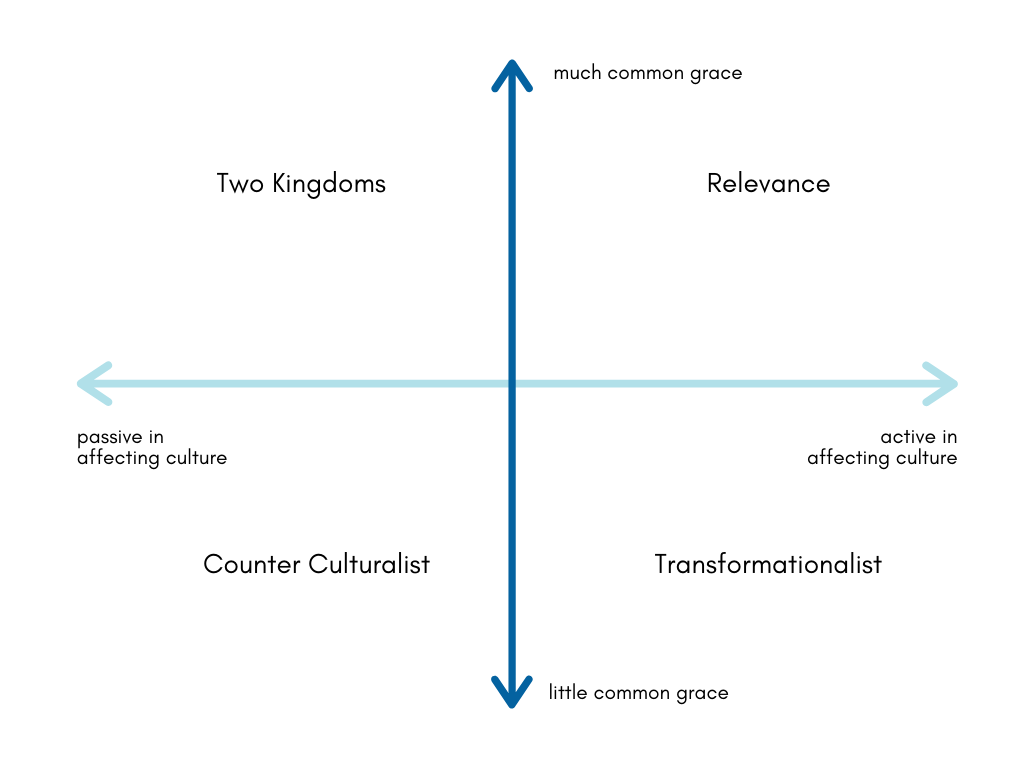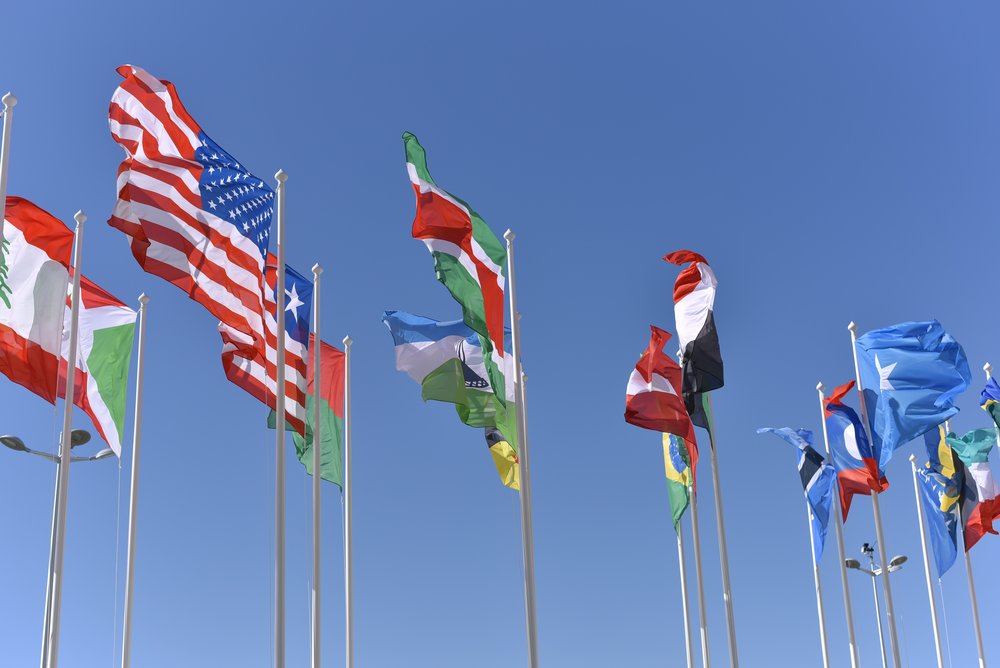Editor’s Note: This article was originally published on January 8, 2019. It was updated on December 30, 2019.
Say the words “Donald Trump” in the middle of a diverse church gathering, and you’ll probably feel the tension rising.
One reason for the sharp disagreement among Bible-believing Christians about the state of our nation is our different philosophies on how Christians and the church should engage culture and politics.
Pastor Tim Keller writes about these different lines of thinking in his book Center Church. To help visualize these groupings, he places Christians onto a grid. The horizontal line (x-axis) represents how much a person or group believes Christians should be active in influencing the world’s culture. The vertical line (y-axis) represents how much common grace a person or group believes is in the world. (Read more on Tim Keller and common grace here.)
So even though a group of people may be professing Christians, depending on their views, they may be on different points on this grid.

Using the grid as a guide, Keller defined four “belief systems” that share common traits with members within each quadrant. The following is a very simplified description of the four group and how each interacts with cultural institutions, which includes politics.
The Transformationist model views the world as broken and culture as corrupt. Advocates of this model want to take an active role in shaping the world through political and cultural engagement.
The Counterculturalist model sees that same broken world but believes Christians should live apart from secular institutions, not seeking to influence them directly. Counterculturalists want the church to withdraw from the world and be a clear alternative to the current culture.
The Relevance model assumes that there is a lot of God’s common grace at work in the world. Because of this, believers should be a part of influencing the culture and even adapt to it, not relying on Christian institutions. Relevance adherents can therefore seek to be a part of secular cultural institutions and work from within them.
The Two Kingdoms model sees common grace as well, but believes that the church itself is not in the business of transforming culture. Two Kingdoms model followers believe there is a difference between the kingdom of God and the kingdom of the world. They believe the church’s role is to equip Christians to work and interact within culture without the church itself or Christian institutions being a force of change.
Let’s take a closer look at these four groups by tackling a simpler issue than politics: Halloween. How should Christians celebrate this day?
Transformationists would say Christians shouldn’t celebrate Halloween. Instead, they would host their own Christian events as an alternative, like a Harvest night, in which children would come to church.
Counterculturalists also see Halloween as a worldly holiday, but rather than having their own event, they would be the ones who would turn off their house lights and not participate.
Relevance thinkers would say Christians should participate fully in the neighborhood’s Halloween events, and they would have their kids to go trick-or-treating around the block and pass out candy to kids in costumes.
Two Kingdoms adherents would allow Christians to participate in Halloween within their communities, but would not have a competing church-sponsored event.
Let’s now try extrapolating this into the political sphere. Please note these are general assumptions .
Transformationists are active in politics, seeking to elect people, create legislation, and appoint judges that follow a Christian worldview. The Religious Right would fall under this category.
Counterculturalists tend to withdraw from the political sphere. An extreme version of this would be the Amish, who seek to create a whole other specific sphere of living without engaging directly with mainstream culture.
Relevance thinkers, who want to adapt to culture, would be heavily involved in current socio-political movements that are not necessarily tied to any church body. They actively work for the common good, making alliances with interfaith or secular groups.
Two Kingdoms adherents seek to do good within their community and build up the church, hoping that the intersection of Christians and the secular world would lead to change. They probably would vote, but they wouldn’t see voting as an essential part of Christian culture, the way Transformationists would.
So what’s the answer? Tim Keller argues that we need to be in the center of the four belief systems. There are pros and cons to each when it comes to engaging politically and culturally.
We must realize that each group has something to contribute and each group has something it lacks. The world is not quite as broken as some Transformationists and Counterculturalists believe; there is much common grace in the world. But Relevance and Two Kingdoms thinkers must remember that the world is not “good enough” either and there must be change inspired by and aiming for the Gospel, which is the only way to true salvation and restoration.
At the same time, there are times when we cannot rely on cultural institutions to change the world, and Transformationists and Relevance believers will find that the institutions themselves can become idols. And Two Kingdoms and Counterculturalists at times will need to speak with loud voices against grave injustices and forcefully protect those around them who are oppressed.
I hope this helps bridge some gaps between you and people who may not share your political beliefs. Let us all cling to the Gospel, and may Jesus be the center and driving force in how we love and interact with the world.

